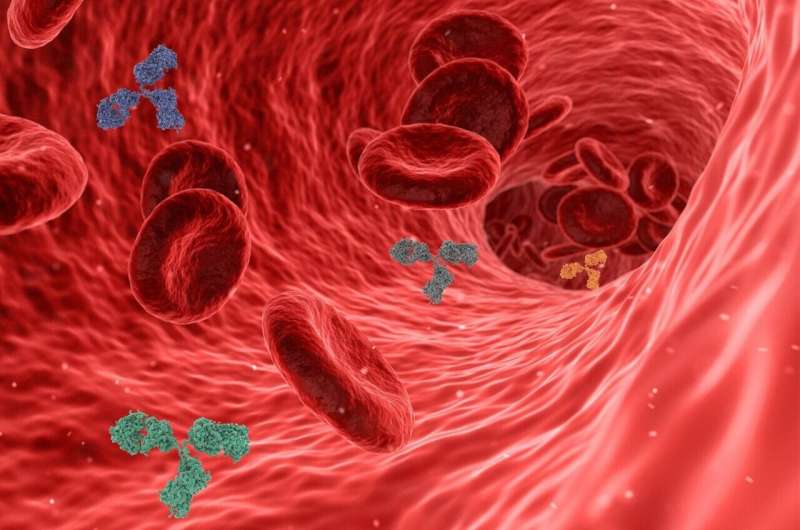
Living in a community where there is minimal access to nutritious foods—often called a “food desert”—may increase the risk of heart attack, stroke or early death for people living with peripheral artery disease (PAD), according to preliminary research to be presented at the American Heart Association’s Scientific Sessions 2022. The meeting, held in person in Chicago and virtually, Nov. 5-7, 2022, is a premier global exchange of the latest scientific advancements, research and evidence-based clinical practice updates in cardiovascular science.
PAD is a narrowing of the peripheral arteries, primarily those in the legs, that carry blood away from the heart to other parts of the body. The reduced blood flow may cause leg pain or difficulty walking. PAD increases the risk of heart attack or stroke.
The American Heart Association/American College of Cardiology guidelines for PAD treatment recommend that people with PAD receive comprehensive medical treatment that includes structured exercise therapy, smoking cessation support and medications customized to their individual risk factors, such as Type 2 diabetes, high cholesterol or high blood pressure, to reduce the risk of heart attack, stroke or amputation. Optimal treatment for PAD includes medications that reduce clotting, blood pressure, blood sugar and/or cholesterol levels.
“While guideline-directed care for PAD reduces complications, the influence of social determinants of health like living in a food desert on receiving optimal care has not been previously explored,” said lead study author Rayan S. El-Zein, D.O., a researcher at Saint Luke’s Mid America Heart Institute at the University of Missouri-Kansas City in Kansas City, Missouri.
Researchers reviewed data from 2015 to 2021 for people with PAD who had been treated in the Saint Luke’s Health System and compared treatments and outcomes of people living in a food desert to those living in a community with access to healthy and affordable foods. Food access was determined by criteria from the United States Department of Agriculture Food Access Research Atlas.
Among the 11,907 adults in the analysis, 15.4% lived in a food desert. People with PAD living in a food desert were 17% more likely to experience a major cardiac event, which included death, heart attack or stroke, compared to those who lived in a community with adequate access to healthy food.
“Our results underscore the importance of screening for social and environmental barriers among people with PAD, particularly those who live in under-resourced communities,” El-Zein said. “The scope of PAD treatment to lower cardiovascular risk and improve PAD-related health must reach beyond clinic visits, prescriptions and procedures.”
They also found that, compared to those with better nutrition access, people with PAD living in food deserts were more likely to be Black or Hispanic, live in an urban area, not have a car, or have high blood pressure, Type 2 diabetes or chronic kidney disease compared to the those who lived in communities with better nutrition access.
“Recognizing that social determinants of health including access to healthy foods influence outcomes in people with PAD is extremely important,” said Mark Creager, M.D., director of the Heart and Vascular Center at Dartmouth-Hitchcock Medical Center in Lebanon, NH, and an American Heart Association past-president. “It helps inform communities, policymakers and governmental agencies about disparities that must be addressed to improve the health of our population.”
The researchers also noted factors associated with people being less likely to receive optimal medical treatment for PAD, regardless of food access. These factors include being female (19% lower odds of optimal treatment); malnutrition (59% lower odds); having chronic obstructive pulmonary disease (COPD) (36% lower odds); having kidney disease (19% lower odds); and living in a low-income area (11% lower odds).
El-Zein said the study confirms findings from other studies that women with PAD tend to be undertreated. “There may be multiple reasons for this,” he said. “Women’s symptoms are less commonly recognized as PAD-related, and their diagnosis is often delayed.”
An August 2022 American Heart Association scientific statement noted that while calf pain is a common symptom of PAD, women are more likely than men to report PAD-related pain in parts of the leg other than the calf muscle or even no symptoms at all. In addition, women’s PAD symptoms are often confused with symptoms of other conditions such as osteoarthritis, therefore, delaying PAD diagnosis and treatment.
“Living in food deserts is associated with worse overall health and an increased risk of death among people with PAD, as well as a lower likelihood of receiving evidence-based treatments that can lower risk,” said El-Zein. “Health care providers should absolutely ask patients with PAD about their access to healthy foods and about their ability to afford and access medical care. This is essential to holistic and meaningful patient engagement in chronic disease.”
Source: Read Full Article